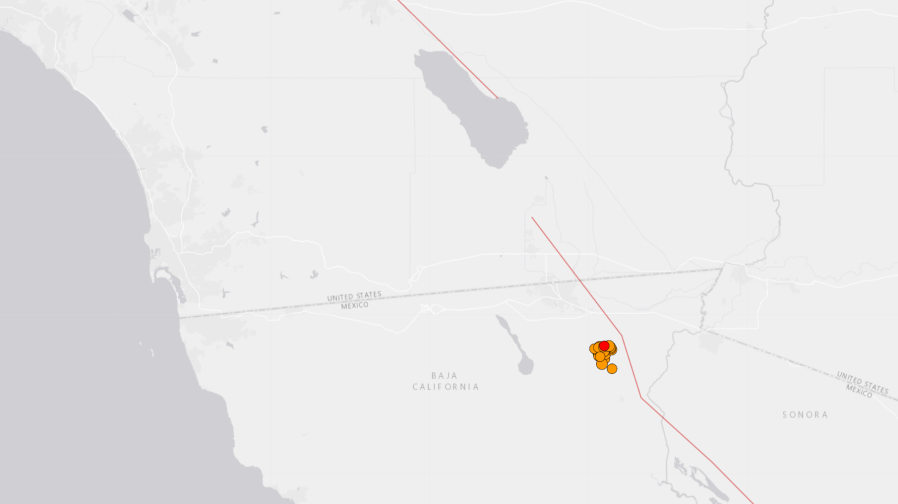I didn’t set out to write a follow-up to last week’s column, which looked at how lagging church attendance in the United States seems to be negatively affecting other areas of our culture.
But by the time that piece appeared, the Washington Post’s data crunchers had produced a lengthy, fascinating — and to my mind, scarier — analysis of church attendance in the U.S. Or rather, a lack of church attendance.
The Post’s report, a blizzard of statistics titled “The most religious, and religiously diverse, places in America,” was compiled by Adrian Blanco, Lenny Bronner and Andrew Van Dam of the newspaper’s Department of Data.
Its most startling takeaway: although 21 to 24 percent of us say we regularly attend religious services, research tracking people’s actual behavior shows that, in fact, the number may be as small as 5 percent. (Regular attendance is defined here as going to services at least three out of four weeks.)
If this figure is accurate, it means only one person in 20 attends church, mosque or synagogue consistently.
Worse still, from my view as a minister who believes churchgoing is spiritually beneficial, the 5 percent statistic is based on research conducted before the coronavirus pandemic hammered religious attendance.
During the pandemic, most places of worship opted for remote services. As any member of the clergy will tell you, even though the pandemic has abated, scads of formerly regular attenders still haven’t returned to on-site worship. Lord only knows what the percentage of regulars is now. I shudder to think.
Here are some other findings from the Department of Data:
▪ The authors do say the attendance numbers may be slightly higher than 5 percent. Worship attendance is hard to measure accurately, for a variety of arcane reasons.
To cite one, in reaching that 5 percent number, scholar Devin Pope, an economist at the University of Chicago, used cell phone data to track where people actually were at church time. But some worshipers — the Amish, Orthodox Jews — don’t carry phones to services.
Pope estimates the 5 percent number could be 20 percent higher than that (or roughly 6 percent). Nobody knows exactly.
“Still, that would point to fewer than 10 percent of Americans hopping in the car (or horse-drawn buggy) to go to church (or mosque, or synagogue) every Sunday (or Friday, or Saturday),” the Post writers observe.
▪ Regular attendance varies from state to state.
In Pope’s study, 6.4 percent of Kentuckians attend services regularly. In Arkansas it’s 7.2 percent. In Tennessee, it’s 8.6 percent. Utah leads the nation with 11.8 percent.
Vermont? 0.7 percent.
▪ Attendance differs from sect to sect.
Only 2 percent of Roman Catholics attend Mass weekly, but that’s still more than the numbers of Muslims, Orthodox Christians and Jews who are regular attenders.
About 7 percent of Protestants and Jehovah’s Witnesses are weekly churchgoers — as are a comparatively whopping 15 percent of Mormons.
The Post data team didn’t just look at how often people attend religion services. Using numbers from, say, the 2020 U.S. Religion Census, the team also looked at where people of various faiths are concentrated:
▪ “As America’s single-largest religious group, Catholics show up everywhere,” the team writes, “from the Italian alleyways of New England to the thriving Filipino churches of Hawaii, from the Polish pockets of the Rust Belt to the Cuban corners of South Florida. Then there’s Acadian Louisiana and, of course, the massive swath of the American West that used to be Mexico — which, as you may know, is pretty Catholic.”
▪ Although Catholicism is the nation’s single largest faith group, taken together Protestants outnumber Catholics.
But, the authors say, Protestants are “splintered into at least 300 groups — including the Progressive Primitive Baptists, the Northern New Salem Association of Old Regular Baptists and the Fire-Baptized Holiness Church of the Americas — displaying a knack for division that might be expected from a religious tradition that owes its existence to the propagation of religious schisms.”
And hearing the word schisms, all the Protestants said, “Amen!”
▪ The South is dominated ecclesiastically by conservative Protestants — particularly Baptists — and by Black Protestants. Mainline Protestants lead in the Upper Midwest. Mormons predominate in Utah, Idaho and nearby areas.
▪ Nearly half of U.S. Jews live in New York or New Jersey, which, the authors point out, “also happen to be the second and third most Islamic states, after Illinois.”
But the salient fact of this lengthy article is the eye-popping one-in-20 Americans who visit their houses of worship regularly.
Attendance at communal services is a hallmark of real commitment to a religion. People of deep faith tend to want to gather with others of faith. As a late friend of mine used to put it, “what you do is what you believe, no matter what you say.”
If just 5 — or 6, or 7 — percent of Americans feel committed enough to darken the doors of their churches for even an hour a week, then we no longer need to worry about becoming a post-religion culture. We’re there. Secularization has won.
Paul Prather is pastor of Bethesda Church near Mount Sterling. You can email him at pratpd@yahoo.com.
Signup bonus from





